
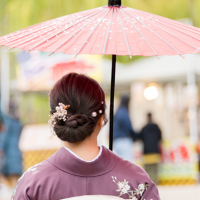
Festivals are held throughout Japan.
It is said that there are hundreds of thousands of festivals in Japan, ranging from nature worship, ancestral worship, Shintoism, and Buddhism to festivals for community revitalization.
Among them, festivals are important for the Japanese, who are agricultural people, in accordance with the seasons.
It is still strictly practiced to this day.
The charm of experiencing a Japanese festival is that you can directly experience Japanese history that you would not normally see.
In this issue, we will discuss the Japanese festivals of the four seasons and their festivals of the past, present, and future,
Here are some useful English phrases you can use when guiding foreigners to festivals.
Japanese Festival
Japanese Festival
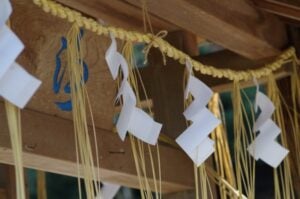
Since ancient times, the Japanese have revered and feared nature, and have looked to the gods in the midst of nature.
Japan is a country that is believed to have 8 million gods.
The ancestors of our country have lived with nature and as an agricultural people.
At all times, they have found the existence of the soul in all things, and have prayed to all the gods and goddesses of the world.
In spring, we rejoice in the sun and sow seeds for a bountiful harvest; in summer, we pray to ward off evil; in autumn, we give thanks for the harvest; and in winter, we pray for the still earth to come to life.
It became a ritual, a festival, and an indispensable part of Japanese people’s lives.
It has been passed down from generation to generation as a form of communication with the gods, both tangible and intangible.
By the Edo period (1603-1867), festivals were enjoyed more as a form of entertainment than as a ritual or prayer.
The festival is popular for its lion dances, fireworks, rampaging portable shrines, and other spectacular activities.
The Shinto/Buddhist Separation Order was issued in the Meiji era (1868-1912), and various festivals were once banned.
However, after the war ended, efforts to revive Japanese culture and festivals began to flourish throughout the country, and distinctive festivals began to be held throughout Japan, as in the Edo period.
There are a wide variety of Japanese festivals, and only visitors to the local area can experience their charm.
Origins of Japanese Festivals
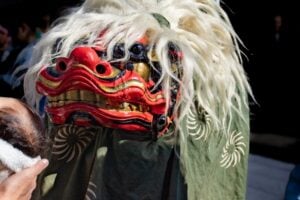
The origin of the Japanese festival is said to be the famous legend of Amano-Iwato.
What is the legend of Amano-Iwato?
Izanagi no Mikoto, the god who created Japan.
The eldest daughter born from his left eye is the sun goddess Amaterasu Omikami.
The sun god Amaterasu Omikami had a younger sister Tsukiyominomikoto, born from his right eye, and a younger brother Susano-onomikoto, born from his nose.
His younger brother, Susano-no-mikoto, ascended to the heavenly realm in search of his sister who lived in Takamagahara.
When Susanoo-no-mikoto arrived at Takamenpara, the abode of the gods, he made a mess of the fields of rice and beans that had been so long harvested with his horse, threw the horse into a huge hole in the roof, and defiled the temple to the point that no one was able to stop his rampage.
Seeing this, his sister, Amaterasu no Omikami, mourned and hid herself in a large pit of rock known as Amano-Iwato.
Amaterasu Omikami is the goddess of the sun.
If her image is hidden, the world will be shrouded in darkness.
Doubtful and terrible things came from everywhere, and even good things were attracted to bad hearts.
Seeing this, the gods gathered at Amayasugawara to consult with each other in order to bring Amaterasu Omikami out of Iwato.
First of all, I let the current chickens, the long-snouted chickens, nest.
This is because it was believed that the voice of the long-croaking chicken had the power to call the sun god.
However, the door does not open.
There, the gods build a big fire, and the gods gather to drink and feast, and Amenouzume-no-mikoto dances to the music.
We all had a great time.
Amaterasu no Omikami, unable to resist the sight of the joyous scene, quietly peeks out from the crevice of the Iwato (rock door).
Then the powerful god Omoikane-no-kami opened Iwato, and Amaterasu Omikami had to go outside.
It is said that Susano-onomikoto was later repentant and went to Izumo to kill the Yamata-no-orochi.
This legend of Amano-Iwato is believed to be the origin of the present festival.
Japanese Festivals and Seasons
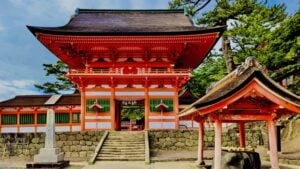
The four seasons are very important for Japanese festivals.
As an agricultural people, the Japanese attach great importance to seasonal milestones, and each spring, summer, fall, and winter festival has its own meaning.
Here we introduce festivals held throughout Japan in each of the four seasons.
Spring Festival
Spring is the season of beginnings.
This is the season of sowing seeds, planting rice, and the sprouting of life that will take a year to grow from here.
The small seeds are planted with a prayer for a bountiful harvest so that they will safely give us fertility in the fall.
This form of prayer became a festival, and the rice planting festival can be seen throughout the country.
The Katori Jingu Otaue Matsuri (Rice Planting Festival) at Katori Jingu Shrine in Chiba Prefecture offers a glimpse into the ancient Japanese rice planting tradition.
The Kohden ceremony, a reenactment of the scene of plowing the rice field with sickles, hoes, plows and oxen before rice planting, and the Saotome Teodoro planting seedlings while singing rice-planting songs.
Visitors can experience a traditional Japanese spring as they see the original Japanese landscape amidst cherry blossoms in full bloom.
Otaue Festival at Katori Jingu Shrine:.
The mainstream spring festival is the Cherry Blossom Festival, which is held throughout Japan during the cherry blossom blooming season.
While admiring the cherry blossoms, visitors can enjoy various events, food stalls, and refreshments available only during this season.
The Hirosaki Sakura Festival in Aomori Prefecture is considered one of the largest cherry blossom festivals in Japan, attracting 2 million visitors each year.
Hirosaki Cherry Blossom Festival:
Summer Festival
Summer in Japan is very hot and humid, and since ancient times, plague has been prevalent, with many disasters befalling the people due to sunshine and typhoons.
Festivals during this season are held all over the country to ward off plague and to appease natural disasters caused by the wrath of the gods.
The Gion Festival in Kyoto and the Tenjin Festival in Osaka are representative festivals to ward off the plague.
Natural disasters typhoons and floods, as well as pests and diseases.
Aomori’s Nebuta Festival is a typical festival for sending off insects.
It is said that the Nebuta Festival is a combination of the spirit sending, Tanabata Festival, dolls, and insect sending events in the Tsugaru region.
And the ancestral beliefs of the Japanese people mingle with Buddhist thought, and Bon dances and fireworks displays are held in August for the Obon festival.
Kyoto’s “Gozan Okuribi” (Bonfire on Mount Gozan) is a poetic tradition at the end of summer.
The Gozan Okuribi Festival is a traditional event to send off the spirits of the Bon Festival, and the mountains surrounding Kyoto are written with flames.
The “Daimonji” is located on Higashiyama, the “Myou” on Matsugasaki, the “Boat” on Nishikamo, the “Left Daimonji” on Daikokuyama, and finally the “Torii” on Saga.
Autumn Festival
Many autumn festivals are held to celebrate fertility.
Of particular importance is the Niinamesai Festival, where people offer thanks to the gods for the joy of another year’s successful harvest of the earth’s fruit.
Labor Thanksgiving Day on November 23, the day on which this new festival is celebrated, has become a national holiday for all those who work outside the agricultural industry.
The most rigorous of these ceremonies is the “Shinto Tasting Ceremony” held at Ise Jingu Shrine.
Karatsu Kunchi” in Saga Prefecture is one of the Hikiyama festivals that has been designated as a UNESCO Intangible Cultural Asset.
Kunchi means autumn festival in northern Kyushu.
Enya! Enya! the beautiful and powerful floats make their way around the old castle town.
And in the fall, intense festivals are held all over the country.
Typical is the Nada no Kenka Matsuri, an autumn festival at Matsubara Hachiman Shrine in Himeji City.
In this festival, mikoshi (portable shrines) are violently clashed with each other, and three mikoshi are smashed into each other without any care even if they are broken.
Then there is a parade of seven gorgeous yatai, and on the final day, three portable shrines and seven yatai will appear and clash with each other.
Winter Festival
Winter, the off-season for farmers, is also a time to endure the harsh cold and enrich the soul and spirit.
The event is now held to rid the body of dirt and remove the year’s troubles.
This “Misogi” became a form of festival and has been handed down to the present day.
A typical example is the “Hadaka Festival” held in Okayama Prefecture.
The Saidaiji Kaiyo Hadaka Festival is designated as a National Important Intangible Folk Cultural Asset.
Every year, 10,000 naked men of the unlucky year wearing loincloths fight over two sacred trees that will be dropped on the Gofuku window of the main hall of the shrine.
It is said that the person who successfully obtains this treasure tree will be a lucky man and will be blessed.
Saidaiji Kaiyo Hadaka Festival:
The Sapporo Snow Festival in Hokkaido is not a Shinto ritual but a local festival, but it has now become an annual winter event as a traditional festival.
The large snow sculptures, the largest of which is as tall as a 4- or 5-story building, are the centerpiece of the festival, and they are a sight to behold for visitors.
English phrases for describing festivals

Here are some phrases that are useful to know when guiding foreign customers about Japanese festivals.
– The three major festivals in Japan are the Gion Festival in Kyoto, the Tenjin Festival in Osaka, and the Kanda Festival in Tokyo.
• 日本三大祭りとは京都の祇園祭、大阪の天神祭、東京の神田祭りです。
– The Gion Festival is a month-long festival during the month of July with a variety of festivities.
The festival is held on the 17th and 24th of each month, and each Yoiyama (evening float parade) attracts a large number of visitors and the city of Kyoto is enveloped in the excitement of the festival.
• 祇園祭は7月の間1ヶ月の間多彩な祭事が行われるお祭りです。 そのなかでも17日と24日の山鉾巡行、そしてそれぞれの宵山には大勢の人々が訪れ、京のまちは祭りの熱気に包まれます。
– The highlight of Osaka’s Tenjin Festival is the beauty of the bonfires that decorate the surface of the water as 100 boats move along the river.
– The highlight of Osaka’s Tenjin Festival is the beauty of the bonfires that decorate the surface of the water as 100 boats move along the river.
• 大阪の天神祭のみどころは100艘の船が川を進み、水面を彩るかがり火の美しさです。 日が暮れることに大阪の街はとても幻想的な雰囲気が漂い、クライマックスには花火が打ち上がります。
– The Kanda Festival, one of the three major festivals in Japan, features a procession of some 500 people dressed in Heian-period costumes passing through the Akihabara and Marunouchi office districts.
The people dressed in Heian attire in today’s Tokyo are full of unusual charm.
• 日本三大祭りの一つ神田祭りは平安時代の衣装を身にまとった500人あまりの行列が秋葉原や丸の内のオフィス街を通ります。 現在の東京の姿の中にあらわれる平安装束の人々は非日常的な魅力にあふれています。
– The word “matsuri” comes from the verb “to enshrine,” meaning to make offerings to the gods.
• 「祭」の語源は「祀る」という動詞で、神々にお供え物をするという意味がありました。
– In ancient Japan, they accompanied people’s lives with prayers for a good harvest and protection against bad luck.
• 古代日本では、五穀豊穣や厄よけ祈願などの祈りを込めて人々の暮らしに寄り添っていました。
– As an agricultural people, the Japanese place great importance on the four seasons, and distinctive festivals are held in each of the four seasons throughout Japan.
• 農耕民族である日本人は四季をとても重視していて、日本各地で特色のあるお祭りが四季折々に開催されています。
– The mikoshi is a portable shrine in which the spirits of the gods usually present at shrines are believed to be temporarily subdued.
• 神輿とは普段神社にいる神霊が一時的に鎮まるとされている輿です。
– At Japanese festivals, there are many small stores called stalls.
From simple food to fun games, it is another way to enjoy Japanese festivals.
• 日本のお祭りには出店とよばれる小さな店がたくさん出ます。 簡単なたべものから楽しいゲームなどがあり、もう一つの日本の祭りの楽しみかたです。
summary
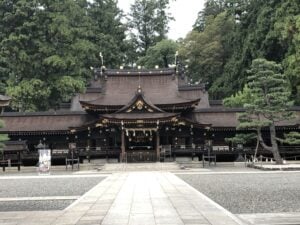
Since ancient times, Japanese people have prayed to the gods that dwell in nature and cherish their daily lives.
Japanese festivals are diverse, and are attracting attention from foreigners visiting Japan as a way to experience Japan’s unique traditional culture as it is today.
Festivals are the memory of the souls of the people.
Beautiful Japanese traditions are revived in the modern age.
The divinity of its extraordinary nature cannot be experienced without actually experiencing it firsthand.
This is a special traditional Japanese culture that we hope foreign visitors to Japan will experience.
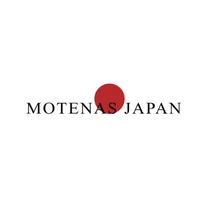
We are working day and night to spread Japan’s unique hospitality culture to people around the world. Please feel free to contact us for any inquiries regarding the reception and hospitality of guests visiting Japan.


